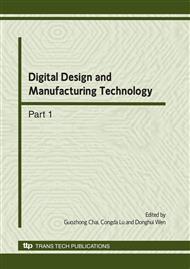p.31
p.36
p.41
p.45
p.50
p.55
p.60
p.64
p.69
TRIZ in 3D Garment CAD
Abstract:
The 40 inventive principles of TRIZ are useful methods for solving engineering design problem. 3D garment CAD is significant for improve the efficiency and level of fashion design. This article describes the application of these principles of TRIZ in three-dimensional garment CAD. Based on the characteristics and requirements of fashion design, the author analyze the basic meaning of these inventive principles, and use them in the research and application three-dimensional garment CAD, such as decomposition and combination of virtual apparel components, clothing structural design, setting of clothing color and pattern library, inter-conversion between three-dimensional mesh of clothing and two-dimensional pieces and so on. Some examples show that the application of these principles is feasible and effective.
Info:
Periodical:
Pages:
50-54
Citation:
Online since:
March 2010
Authors:
Keywords:
Price:
Сopyright:
© 2010 Trans Tech Publications Ltd. All Rights Reserved
Share:
Citation:


